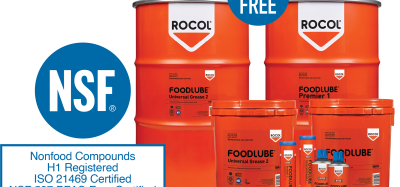Strategic considerations in choosing a rapid method
- Like
- Digg
- Del
- Tumblr
- VKontakte
- Buffer
- Love This
- Odnoklassniki
- Meneame
- Blogger
- Amazon
- Yahoo Mail
- Gmail
- AOL
- Newsvine
- HackerNews
- Evernote
- MySpace
- Mail.ru
- Viadeo
- Line
- Comments
- Yummly
- SMS
- Viber
- Telegram
- Subscribe
- Skype
- Facebook Messenger
- Kakao
- LiveJournal
- Yammer
- Edgar
- Fintel
- Mix
- Instapaper
- Copy Link
Posted: 28 February 2008 | Dr. John D. Marugg, Nestlé Research Centre, Quality and Safety Department, Microbiological Safety Group, Switzerland | No comments yet
Food manufacturers face challenges in optimising speed and efficiency, reducing product inventory, simultaneously responding to microbiological and chemical contaminants and entering the production process, via ingredients or the environment. Currently, most official or reference methods for pathogen or contaminant detection are laborious, costly, and often take a long time (3-7 days or longer) to obtain results. The application of rapid methods allows for an easy and fast response in the monitoring of raw materials and production environments, reducing the turn-around-time along the supply chain.
Food manufacturers face challenges in optimising speed and efficiency, reducing product inventory, simultaneously responding to microbiological and chemical contaminants and entering the production process, via ingredients or the environment. Currently, most official or reference methods for pathogen or contaminant detection are laborious, costly, and often take a long time (3-7 days or longer) to obtain results. The application of rapid methods allows for an easy and fast response in the monitoring of raw materials and production environments, reducing the turn-around-time along the supply chain.
Food manufacturers face challenges in optimising speed and efficiency, reducing product inventory, simultaneously responding to microbiological and chemical contaminants and entering the production process, via ingredients or the environment. Currently, most official or reference methods for pathogen or contaminant detection are laborious, costly, and often take a long time (3-7 days or longer) to obtain results. The application of rapid methods allows for an easy and fast response in the monitoring of raw materials and production environments, reducing the turn-around-time along the supply chain.
Historical perspective
The introduction of HACCP as a mandatory food safety system has resulted in a shift of applied food inspection procedures. Instead of relying on short on-site inspection procedures and analysis of finished products, inspectors or auditors rely on review of HACCP records to check the safety of products. Consequently, factories release products based on monitoring of ingredients and production environments rather than on end-product testing. Microbiological testing remains an important tool in the validation of HACCP, and the number of required analyses is still very high, and will continue to be so for the foreseeable future. Since release of ingredients and end products is in most cases, directly linked to obtaining negative analytical test results, detection methods need to be quick, easy and reliable. Furthermore, for the monitoring of production environments, it is important to know about potential problems as fast as possible, to allow for corrective measures that preferably have an impact on ongoing production processes.
The development and commercialisation of rapid methods has been expanding over recent years. As a result, a great number of laboratories within food manufacturers like Nestlé have been faced with increasing pressure from manufacturers and suppliers to accept their methods, kits, or systems. This has led to an increased number of evaluations, that are more often than not, driven by the method supplier, rather than by a real need within the businesses or laboratories. Due to time and cost constraints, many of these evaluations are limited in scope, and in many cases neither systematically performed following standardised protocols, nor properly documented. Because of the huge and diverse offer of rapid methods and the continuous flow of new alternatives, the choice for a suitable and reliable rapid method has become extremely complex. In the following sections of this paper, I will explain how Nestlé has tackled the selection, evaluation and validation of rapid methods.
Evaluation and validation process
Some 10 years ago, the NesVal (Nestlé Validation) system was introduced to provide a common, coordinated framework for the internal evaluation and validation of new and rapid microbiological methods. In short, NesVal evaluates the needs for specific, rapid methods within the company, and assesses their technical performance including work load- and cost considerations. The NesVal process can roughly be divided in to four different steps:
- Formulating rapid method requirements
- Collecting information on candidate rapid methods
- Evaluation process
- Decision and implementation
Requirements
For a successful application of rapid methods in foods, some major challenges need to be overcome: Foods represent a wide variety of complex matrices, where target organisms are often present in low numbers. In many cases, food products contain intrinsic bacterial flora that may hinder the detection of the target. Since processing of foods results in stressed or injured cells, lengthy enrichment procedures remain required to ensure detection of viable cells.
The minimum requirements for rapid microbiological methods include flexibility (multi-target, combined detection and identification), a good sensitivity combined with a good specificity (no false-negatives or false-positives), ease-of-use (simple, automation), speed (fast results), and last but not least, low costs.
The main requirement for a rapid method is of course its reliability. False-negative results are not acceptable, but also false-positive results should be kept to an absolute minimum. The latter do not provide a direct threat for product safety, but may have severe (costly) consequences for the production process and product release. In addition, it is important that a method is recognised by authorities and trade partners. Official validations (e.g. MicroVal according to ISO16140, or AOAC-Official Methods) are important to demonstrate reliability of a rapid method, but are also crucial in obtaining the needed recognition.
Costs play an important role in the selection process. This does not only apply to costs of kits or reagents, but include equipment and labour costs, laboratory space, waste disposal, etc. Additional practical requirements that are important for implementation of rapid methods in routine laboratories include easy handling and easy training, compatibility with the normal laboratory organisation (respecting standard working hours), sufficient capacity or throughput (routine laboratories may handle up to several hundred samples per day), compatibility with existing LIMS, guaranteed availability and world wide delivery of equipment and/or kits, plus reliable suppliers with a favourable service (quick repair or back up systems in case of problems). Finally, it can be of interest to have the possibility to change a system or supplier in a relatively simple way (easy-exit-strategy), especially in those cases where expensive equipment is required. Rental agreements may provide this freedom, but are not always possible.
Collection of information
In general, gathering information on candidate rapid methods is a relatively easy task. Most method suppliers provide (for obvious reasons) a wealth of relevant data on their methods or systems. Additionally, useful information can be obtained from validation organisations, publications, colleagues in the food industry, and sometimes even from suppliers of other methods.
Evaluation process
The application of validated, rapid methods is a requirement in accredited laboratories, and is in demand by authorities (refer to EN 2073 regulations) or customers. The evaluation and validation of rapid (and new) microbiological methods requires a standardised and systematic comparison to reference and standard methods (e.g. ISO/CEN standards). Within Nestlé, the evaluation and validation of rapid methods is centrally coordinated from the Nestlé Research Centre in Lausanne (CH) through the earlier mentioned NesVal process. NesVal relies on official validation studies by recognised validation bodies like AOAC, AFNOR, or MicroVal. However, in some cases it may still be necessary to perform additional internal validation studies in order to demonstrate that the method also provides reliable results with (Nestlé) specific, problematic matrices (e.g. specific environmental samples, infant formulae with probiotics, high-salt culinary products). Recently, the scope of NesVal has been expanded to include rapid methods for chemical contaminants and allergens. In summary, the NesVal system comprises of:
- A systematic choice of candidate methods based on the needs of laboratories and the offer of method suppliers
- A fixed procedure for evaluation and approval of methods that is complementary to ISO16140
The technical rules for the assessment of microbiological method performance are described in ISO16140 (2003), and include comparative and collaborative trials with specific requirements for number of samples, matrices, participating laboratories, statistical evaluations, and reporting. Besides the attention that is given to technical requirements, methods are also judged on other, more general criteria, as described above.
Decision and implementation
Once a method has been accepted by NesVal, a so-called ‘Laboratory Instruction’ (LI; SOP) is established and the decision is communicated to the laboratories in the different markets. The implementation of rapid methods is currently left at the discretion of the markets, but NesVal strongly promotes the use of automated methods in high-throughput laboratories, or the use of rapid culture methods, wherever they provide a benefit. NesVal maintains communication with suppliers not only during the evaluation, but also as a follow up activity to review the method performance after implementation.
The key achievements of NesVal during its 10 years of existence have been the acceptance of 19 rapid or alternative methods (ELISA, PCR, or chromogenic media/concepts), with 8 methods in different stages of evaluation. Not all rapid methods pass the NesVal criteria, and so far, 9 concepts or methods have been rejected. The major reasons for rejection of rapid methods include immature concepts (not yet tested with food matrices), methods that not yet have been evaluated by independent laboratories, methods that are too labour intensive (many handlings or pipetting steps), methods that are not cost-effective, or those that have a limited availability.
Concluding remarks
- The food industry still leans heavily on traditional microbiological methods (especially for hygiene indicators)
- Rapid and reliable low cost, rapid methods are needed
- The offer is enormous, but the choice is difficult
- Method evaluation is expensive and requires scientific competence, plus a good understanding of the users’ requirements
- NesVal: a successful, coordinated and systematic approach for method evaluation, approval and implementation of rapid methods









